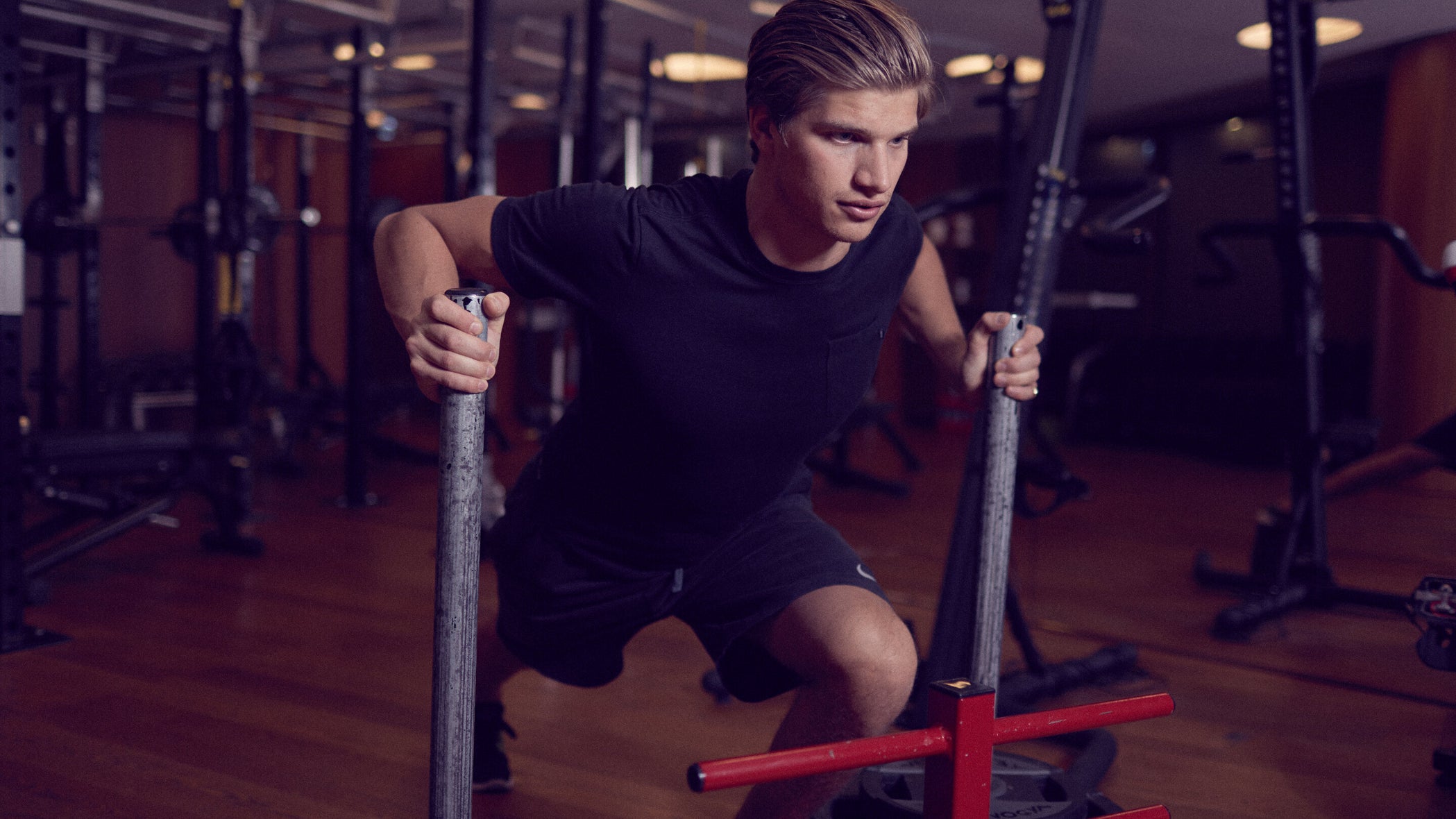
Is All Pain Bad Pain?
For many of us stuck at home right now, working out is a form of much-needed therapy. But when you’re out of the gym, away from that direct contact with the experts and in charge of your own fitness regime, it can be hard to know when pain is acceptable or when it indicates that something more serious is afoot. We spoke to Workshop’s founder Lee Mullins to find out the difference between good and bad pain, and how to recognise when to take a break.
Understand the difference between pain and soreness
Pain such a broad word. Muscle soreness or dull aches can be a good thing and is often a sign of new stress that you’re exposed to during your training. Then there’s the kind of shooting pain that’s normally a response to some sort of underlying issue, such as a muscle tear, compressed disc or a tweak in a tendon or ligament. That’s a different pain response. When in the gym, if I have clients that say something hurts or that express discomfort, I always get them to differentiate between muscles soreness and shooting pain. When exercising I would expect a degree of discomfort but when I think about pain, the thing that alarms me is shooting pain, say in the back, the knee, the hip. If you do experience shooting pain, stop what you’re doing, take a second, walk around, do something light and low impact and see if it’s still there. If it is, then stop and get checked it out by doctor or physio. If the dull aches turn into chronic dull aches which don’t go away after rest, that can also be a cause for concern.
Know when to stop
Generally speaking, I would say don’t push on through bad, shooting pain. What’s the point? Really the only population that would have to grin and bear it and deal with that kind of extreme pain would be athletes. And if you’re not that, then it’s not worth it. Just walk away. What most people are after in terms of results can be experienced without having to experience any pain or extreme muscle discomfort.
How to deal with pain
If you feel a shooting pain or something more intense when working out, then I would stop. Depending on what stage of the workout you were at I would suggest calling it a day or encourage working on a different body part as long as there was no pain associated there. Then I would just rest and monitor it over next couple of days before checking in on the symptoms. If it’s still there, then get it checked out. If it passes, then test the water with a cautious workout, so less intensity and less weight. If there’s any sign of it reacting again, stop. If not, then ease your way back into it.
How to work out around soreness
Soreness or stiffness will actually ease the more you train. In general, people should be aiming to get 3 to 4 quality workouts in a week. That will, depending on the type of training and your experience level, elicit a certain degree of soreness, but what’s important is to still keep moving on those non active day, whether it’s gentle stretching, getting your 10,000 steps in a day, whatever that element of moving looks like. Other things can help too, like muscle balms, using CBD, hot baths with Epsom salts. If you’re experiencing real muscle soreness you can train the next day, just maybe try working out a different or body part. General ratios for those new to exercise and experiencing soreness, could look something like one day on one day off. If you’ve been training for a while, say 6-18 months, then start to increase that up to training 2 days then a rest and so on. If you’re more experienced, as long as your recovery program around workouts is really good, I’d say more like 3 days on, 1 day off, then 2 days on 1 off, and repeat that cycle.
